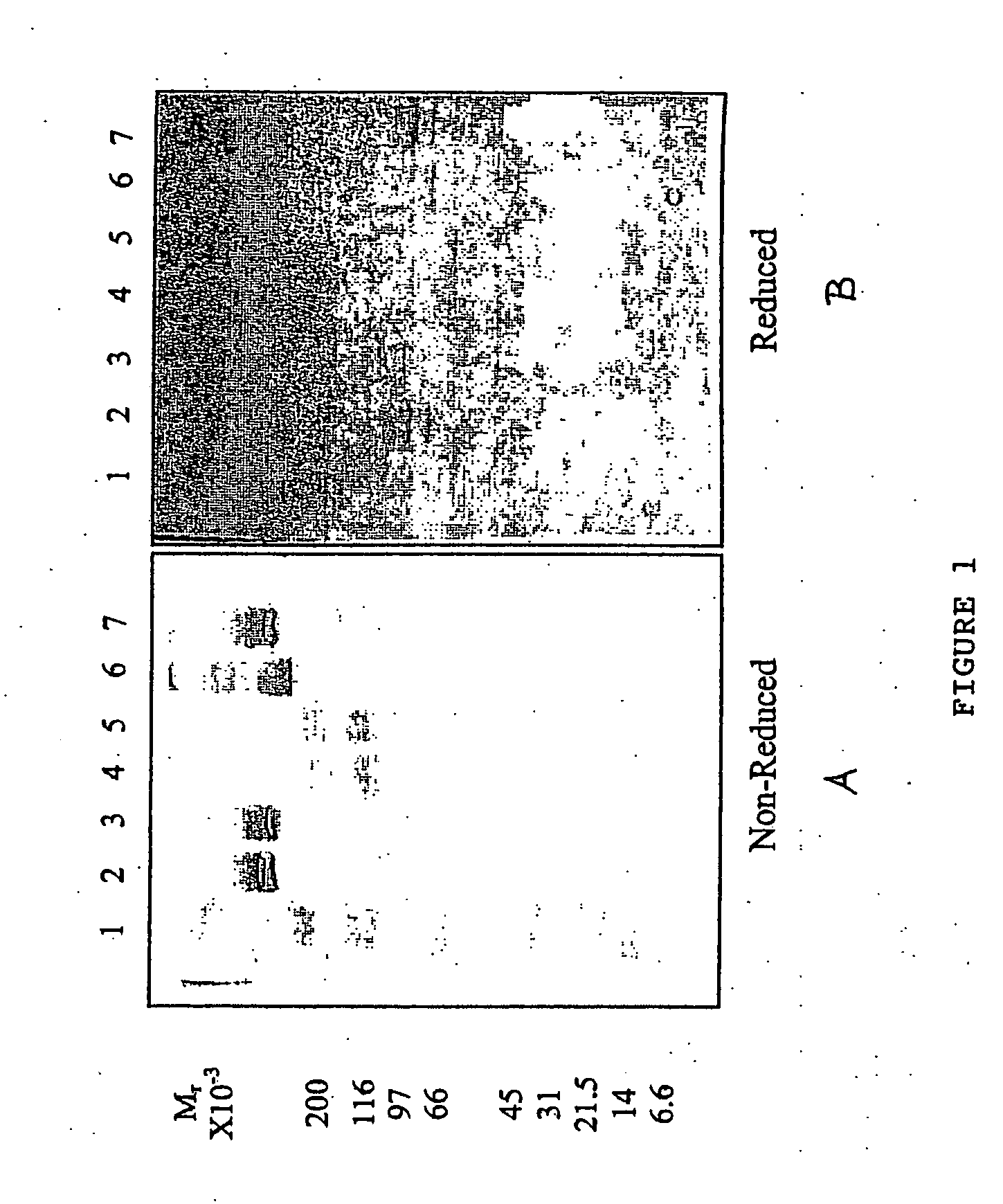Storage-stable fibrinogen solutions
a technology of fibrinogen solution and storage, which is applied in the field of storage-stable, concentrated fibrinogen preparations, can solve the problems of lyophilate being extremely difficult to prepare, fibrin clot, and relatively unstable cryoprecipitates, and achieves the effects of enhancing the effectiveness of the resulting fibrinogen, preventing the proteolysis of the fibrinogen sample, and enhancing the storage stability
- Summary
- Abstract
- Description
- Claims
- Application Information
AI Technical Summary
Benefits of technology
Problems solved by technology
Method used
Image
Examples
example 1
Stability of Aqueous Bovine Fibrinogen Stored at Room Temperature, pH 7-10
[0069] To evaluate the ability to store the fibrinogen solutions of the invention for long periods of time at room temperature, the stability, solubility and clotting activity of a fibrinogen solution were evaluated following storage for at least 149 days (21 weeks) at a constant temperature of 20-25° C. Solutions of bovine fibrinogen (50 mg protein / mL) were freshly prepared on day 1 of the storage period in one of the following 0.1 M buffers: histidine, pH 7.24; glycine pH 9.31; or carbonate, pH 9.05 or pH 9.86.
[0070] The solutions were inspected for clarity and spontaneous clotting. A manual clotting assay was performed at 25° C. by neutralizing the solutions to pH 7.0-7.5, and adding thrombin (125 units / mg fibrinogen), and 3-5 mM excess CaCl2 over citrate in the fibrinogen solution. The preparation was mixed vigorously, and the time required for a clot to form was measured as described above, and recorded...
PUM
| Property | Measurement | Unit |
|---|---|---|
| temperature | aaaaa | aaaaa |
| pH | aaaaa | aaaaa |
| temperature | aaaaa | aaaaa |
Abstract
Description
Claims
Application Information
 Login to View More
Login to View More - R&D
- Intellectual Property
- Life Sciences
- Materials
- Tech Scout
- Unparalleled Data Quality
- Higher Quality Content
- 60% Fewer Hallucinations
Browse by: Latest US Patents, China's latest patents, Technical Efficacy Thesaurus, Application Domain, Technology Topic, Popular Technical Reports.
© 2025 PatSnap. All rights reserved.Legal|Privacy policy|Modern Slavery Act Transparency Statement|Sitemap|About US| Contact US: help@patsnap.com

